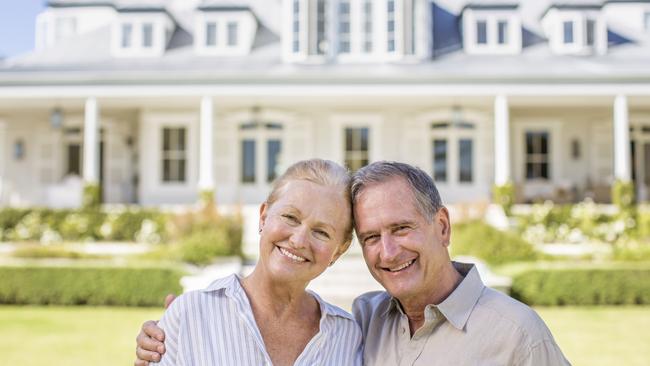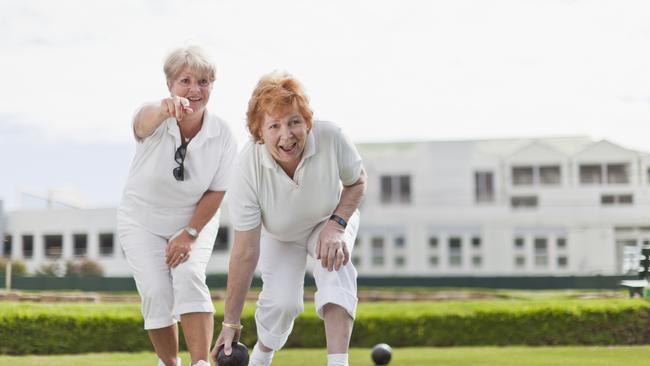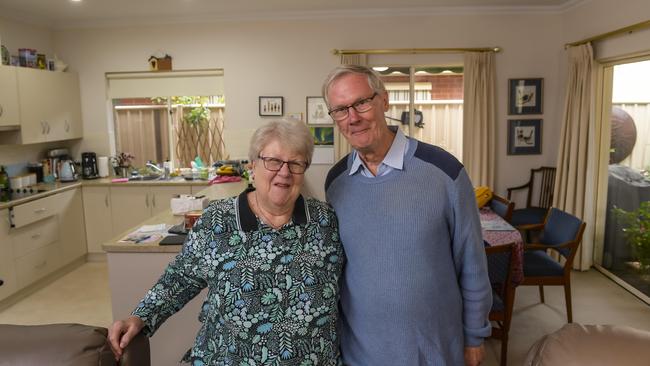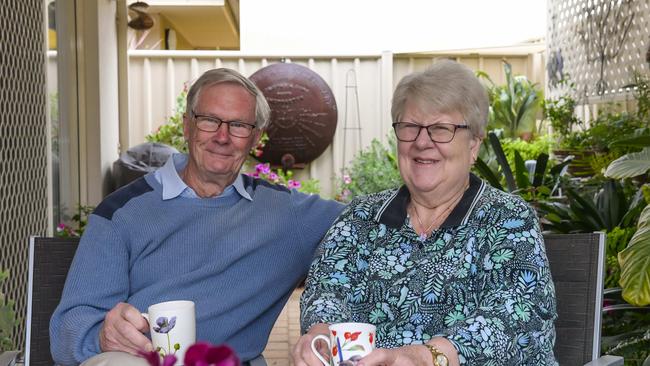The secret weapon to ease South Australia’s housing crisis
More than 120,000 South Australians over 75 live in homes too large for them. We reveal how this impacts the rest of the market, and the benefits they could unlock by embracing retirement living
Property
Don't miss out on the headlines from Property. Followed categories will be added to My News.
Getting South Australia’s retirees out of larger homes and into more suitable retirement accommodation could save the federal government $1bn each year, help ease the housing crisis and would lead to a better quality of life for our elderly, a new report shows.
The Better Housing For Better Health report – commissioned by the Retirement Living Council – reveals 76 per cent of all South Australians over 75 are living in large homes, with 7 per cent having at least one spare bedroom.

According to population data from the Australian Bureau of Statistics 2021 census, that is more than 120,000 South Australians living in a home that’s too large for them.
Retirement Living Council executive director Daniel Gannon said Australia’s elderly faced significant housing challenges that needed to be addressed immediately.
“One of the big problems we face as a sector is a lack of supply of retirement communities,” he said.
“The sector is effectively operating at full capacity but we’re now staring down an extra 90,000 South Australians aged over 75 within the next 20 two decades.”

The report shows the clear mental health benefits for those who move into retirement living, with residents up to five times more socially active, 41 per cent happier, and more physically and mentally healthy.
“This report highlights great benefits for consumers when they right-size into a retirement community, ranging from better health, improved happiness, greater social interactivity, but it also highlights the fiscal opportunities for governments as well,” Mr Gannon said.
“Part of the purpose of this report is to address the lack of profile and understanding about retirement communities that provide better housing and better health outcomes for older South Australians, which have a direct benefit for governments through fewer GP visits, shorter hospital stays and, critically, through delayed entry into aged care.”

Mr Gannon said the overwhelming majority of older South Australians were living in bigger homes that were no longer suitable for their needs.
“This can lead to trips, falls and increased interaction with GPs, hospitals and the health care system,” he said.
“There’s great potential for retirement communities to reduce government spending on aged care by about $1bn every year, and this comes at a time when aged care is costing taxpayers billions of dollars in forward estimates.
“If more of these older South Australians moved out of the bigger family home into purpose-designed retirement communities, it not only benefits younger homebuyers looking to get into the market but it also delivers greater health benefits for those right-sizing.

“There’s an affordable option in an otherwise unaffordable housing market that’s sitting in plain sight, it’s leading to better health outcomes for consumers, and it’s saving governments billions of dollars every year with reduced interaction with healthcare systems.”
MORE NEWS:
See inside: House in ‘parent poisoning’ case hits the market
Shock SA mortgage stat as more rate pain looms
Want to rent a room? Even they’re hard to find
Oodie founder sells luxe beachside home for more than $3m
Just as new developments required a portion of its housing to be allocated for affordable accommodation, Mr Gannon said the government should consider implementing a percentage of a development’s space to incorporate suitable retirement housing.
“Retirement living could be a secret weapon for the government to help inject more homes into the market at a time when we need them the most,” he said.
“Every time an older Australian right-sizes into a retirement community, it frees up a home for singles, couples and young families, so every time that transition takes place we are also injecting supply of traditional homes into the market.”
Real Estate Institute of South Australia chief executive officer Andrea Heading said a government incentive to encourage people to move into retirement living might be needed and could benefit recipients in the same way as the first homeowners grant.
“A lot of these people are taking up four bedrooms or larger allotments when this could be a dream realised by a family,” she said.
Ms Heading said more awareness was needed to eradicate outdated thinking about what retirement living offered.
“The lifestyle in some of these villages is incredible, and what we hear from a lot of people is that they wish they made the move sooner,” she said.
No regrets – and no more lawns to mow!
Retirees Peter and Margaret Caddy, both 76, moved into the Levande Ridgehaven Rise retirement village 13 years ago and they haven’t compromised on lifestyle one iota.
“We used to live at Vista, and it was a standard three-bedroom home on a large block,” Mr Caddy said.
“If anything happened to me, Margie wouldn’t be able to cope very well at all, and I kept thinking that we didn’t really need this big lawn – we’ve got a nice garden but the time has come where I didn’t want to be a slave to the garden.
“Mowing lawns for 40 years had lost its novelty.”

Mr Caddy, a retired electronics engineer, said it was a relief to live a more low-maintenance lifestyle in a tight-knit community.
“We’re very happy here,” he said.
“It’s a different sort of living, and since we’ve been here my brother and his wife have moved in, too, on our recommendation, and I see him once a week.”
Mr Caddy said more retirement housing was needed.
“The village is very full and people are queuing up to get in,” he said.
“There was an open here the other week and they had 30 or 40 couples that came and inspected it.
“We’ve got friends that don’t want this lifestyle.
“But when you look at them, they’re less and less able to do what they could normally do, and it becomes a challenge for them.”

Mr Caddy said the couple enjoyed the lifestyle retirement living offered and the various social events organised by the residents.
He said they felt safer in a village setting than if they had stayed in their previous home.
“You keep an eye on each other, not to intrude, but just to look out for each other,” he said. “You certainly enjoy yourself more here than you would just in your own home.”
Differences in community living and aged care
By Daniel Gannon
Retirement Living Council Executive Director
Choosing where we live is driven by many factors, including lifestyle, affordability, work or family.
As we get older, our outlook can be informed by challenges associated with health and ageing, which might require a move into a retirement village or aged-care facility.
Understanding the differences is critical because they are not the same thing.
Retirement communities are specifically designed to foster a sense of belonging and connection that brings a host of benefits, such as reducing isolation and improving mental wellbeing.
By contrast, the primary focus of nursing homes – also known as aged-care facilities or residential aged care – is about providing care and keeping residents safe.
There are currently 250,000 people around the country living in one of 2500 retirement communities, which are suited to older Australians who want to live independently for as long as possible – but with the benefits of community living.

Nursing homes, on the other hand, are suited to individuals who can no longer live independently and need care and support around the clock.
Both play a critical role within the housing ecosystem – for very different reasons.
A two-bedroom unit in a retirement community is, on average, 48 per cent more affordable than the equivalent median house in the same postcode – and most villages are full. Services, facilities and on-site support varies, too.
Some retirement communities offer gyms, libraries, golf or bowling greens, theatres, an on-site concierge and 24-hour emergency assistance – funded by residents.
As Australians are living longer and healthier lives, the way care is funded and delivered is evolving.
We should encourage age-friendly housing that improves mental health and wellbeing while minimising trips and falls, leading to fewer visits to the doctor. The benefits for consumers and governments are compelling.
Retirement communities provide better housing that lead to better health outcomes for older Australians.
Knowing the difference between the two is critical, especially since there are currently two million Australians aged over 75 – a cohort that will grow by 70 per cent over the next two decades.



